Dujiangyan Panda Base – Ticket, Opening Hours, Highlights, and Tips
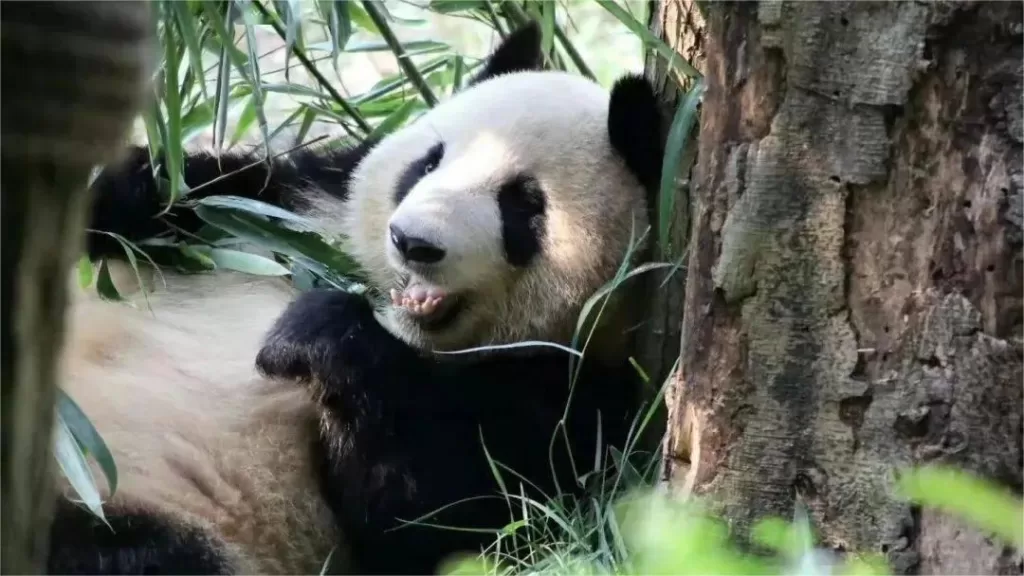
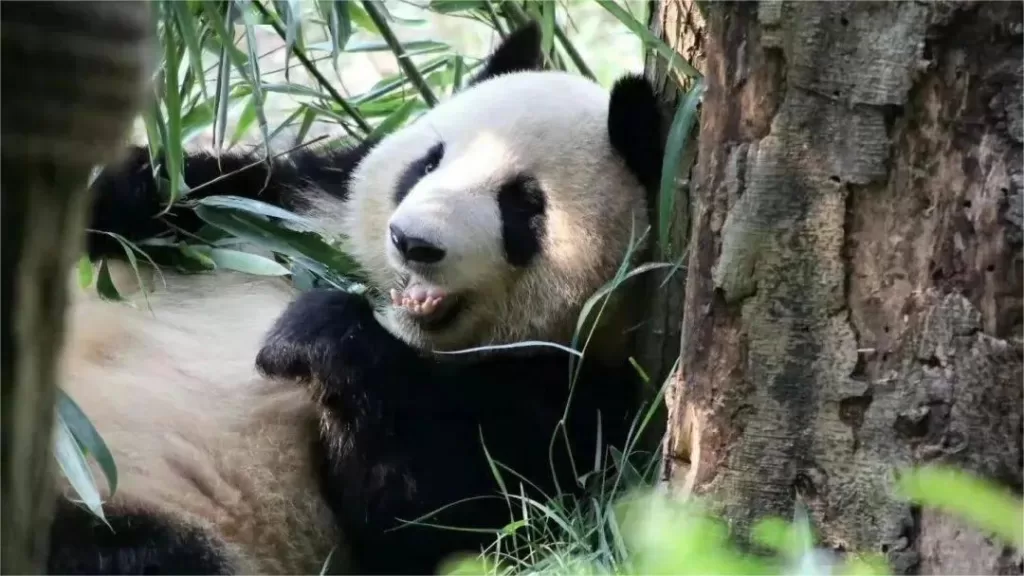
The Dujiangyan Panda Base (都江堰大熊猫基地), located in the suburb of Chengdu, Sichuan and supported by the Hong Kong Special Administrative Region Government, stands as one of the four major bases under the China Conservation and Research Center for Giant Pandas. Positioned in close proximity to the UNESCO World Heritage Site designated as the natural habitat of giant pandas, the base benefits from a climate and natural environment conducive to the well-being of these iconic creatures.
Encompassing a vast area of 50.6 hectares, with a built-up area of approximately 12,542 square meters, the project required an investment of 230 million Chinese RMB. Noteworthy as the sole research institution in China primarily dedicated to the prevention and control of diseases affecting giant pandas, as well as the rescue and rehabilitation of these animals in the wild, the base boasts a picturesque landscape. With bamboo groves swaying gently, lush greenery providing ample shade, and the melodious sounds of birds amid fragrant flowers, the air is refreshing. Expansive lawns and winding pathways further enhance the overall serene ambiance.
The Dujiangyan Panda Base is strategically divided into six main areas based on distinct functionalities: Disease Prevention and Control Research Zone, Quarantine and Isolation Zone, Rehabilitation Training Zone, Public Education Zone, Natural Landscape Zone, and Administrative Zone. Among these, the Rehabilitation Training Zone, Public Education Zone, and Natural Landscape Zone are open to the public, offering visitors a comprehensive and immersive experience. The meticulous planning and dedication to giant panda conservation make the Dujiangyan Panda Base a significant hub for research, education, and public engagement in the realm of wildlife conservation.
Table of Contents
- Basic Information
- Location and Transportation
- Highlights of Dujiangyan Panda Base
- Vlog about Dujiangyan Panda Base
- Useful Tips from Genuine Reviews
- Facts about Giant Panda
- Attractions Near Dujiangyan Panda Base
- Other Places to See Panda
Basic Information
| Estimated Length of Tour | About 3 hours |
| Ticket Price | 55 RMB |
| Opening Hours | 7.50 -17.30; Last admission: 17.00 (1st May – 31st October) 8.30 -17.00; Last admission: 16.30 (1st November – 30th April the next year) |
| Telephone Number | 0086-028-87296600 |
Location and Transportation
The Dujiangyan Panda Base is located in Qingchengshan Town, Dujiangyan City, which is about 60 kilometers (37 miles) away from Chengdu, the capital city of Sichuan Province in southwestern China. The base is situated at the foot of the Qingcheng Mountains, a UNESCO World Heritage Site known for its scenic beauty and Taoist temples.
To get there, you can take the express railway to Qingcheng Mountains Station (青城山站) and then transfer to a taxi. However, I should remind you that the Dujiangyan Panda Base, Qingcheng Mountains, and Dujiangyan Irrigation System are pretty close to each other. Make sure you take this into account when making your itinerary to avoid wasting time and money.
Highlights of Dujiangyan Panda Base
Panda Enclosures
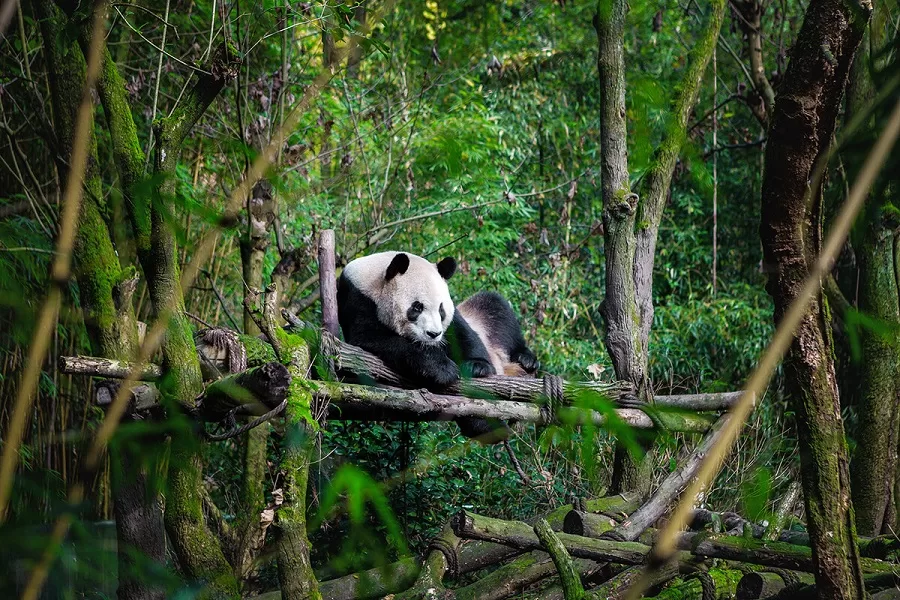
The panda enclosures at Dujiangyan Panda Base are designed to provide a natural habitat for the giant pandas. They are spacious and include bamboo groves, trees, and rocks, which mimic the pandas’ natural environment. Visitors can observe the pandas playing, sleeping, and eating their favorite food, bamboo. The base has several enclosures, each accommodating a different age group and gender of the pandas. In addition, there are special enclosures for pregnant pandas and those with cubs. The panda enclosures at Dujiangyan Panda Base are carefully designed to provide the pandas with a comfortable and healthy environment, ensuring their well-being and conservation.
Panda Nursery

The panda nursery at Dujiangyan Panda Base is a special facility designed to care for baby pandas. It provides a safe and nurturing environment for the pandas, where they can receive round-the-clock care and attention from experienced staff. Visitors to the base can observe the baby pandas up close as they play and interact with each other. The nursery also has a specialized care unit for pandas that need additional medical attention or have special needs.
Lesser Pandas
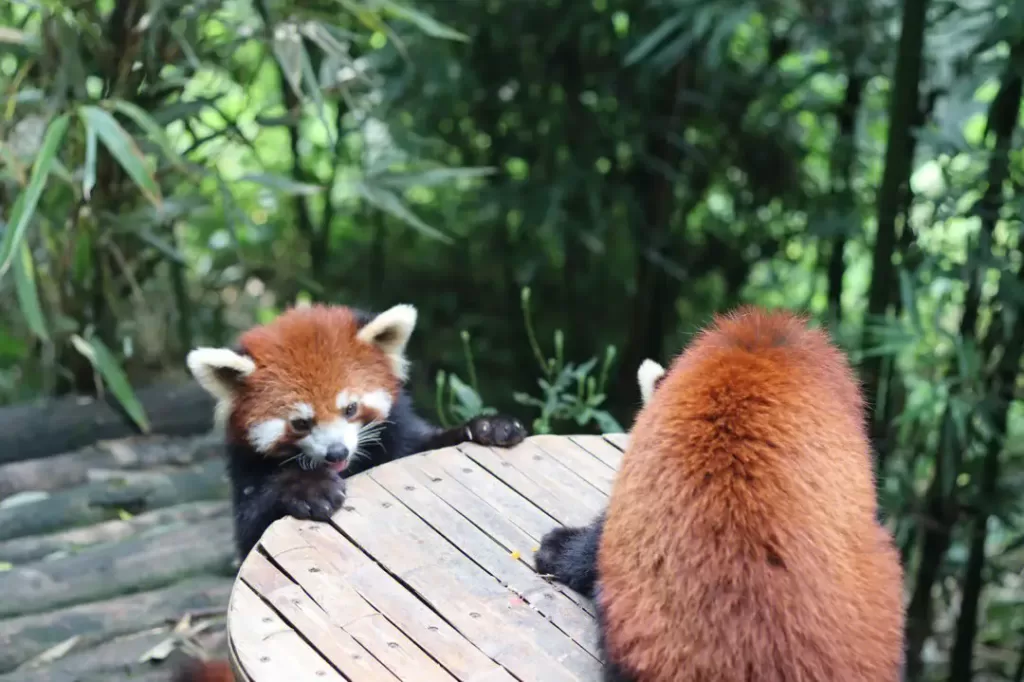
In addition to giant pandas, the Dujiangyan Panda Base is also home to a number of lesser pandas, also known as red pandas. These small and adorable animals are native to the forests of China and are known for their distinctive red fur and bushy tails. Visitors to the base can observe the lesser pandas in their natural habitat, climbing trees, playing with each other, and snacking on bamboo. The base has a dedicated enclosure for the lesser pandas, which provides a safe and comfortable environment for these precious animals.
Vlog about Dujiangyan Panda Base
Useful Tips from Genuine Reviews
Optimal Timing for Red Pandas: Red pandas are most active in the morning, especially around 8-9 am. To have a close encounter with them, it’s recommended to head straight to the area where they are released. This helps avoid the crowds and allows for a more intimate experience. After spending time with the red pandas, visitors can then leisurely explore the giant panda area.
Feeding Schedule: Around 9:20 am, keep an eye out for the feeding of the red pandas. Similarly, around 11 am, the keepers will call the giant pandas back to their enclosures for lunch.
Ideal Visiting Times: It’s advised to visit either in the morning or late afternoon, around 4-5 pm. Pandas tend to sleep a lot at noon, so if they are napping upon arrival, visitors can explore the panda villas and maternity rooms before returning to see the pandas. It’s emphasized that pandas may appear inactive, so timing is crucial for a better viewing experience.
Insect Precautions: The mountainous area has a high presence of mosquitoes, especially during the summer. It’s recommended to bring mosquito repellent, such as floral water, when visiting during this season.
Facts about Giant Panda

Giant Panda Habitat – Where do the pandas live?

Why giant panda is endangered?

How much bamboo do giant pandas eat in a day?

Giant panda diet – what do they eat?
Attractions Near Dujiangyan Panda Base
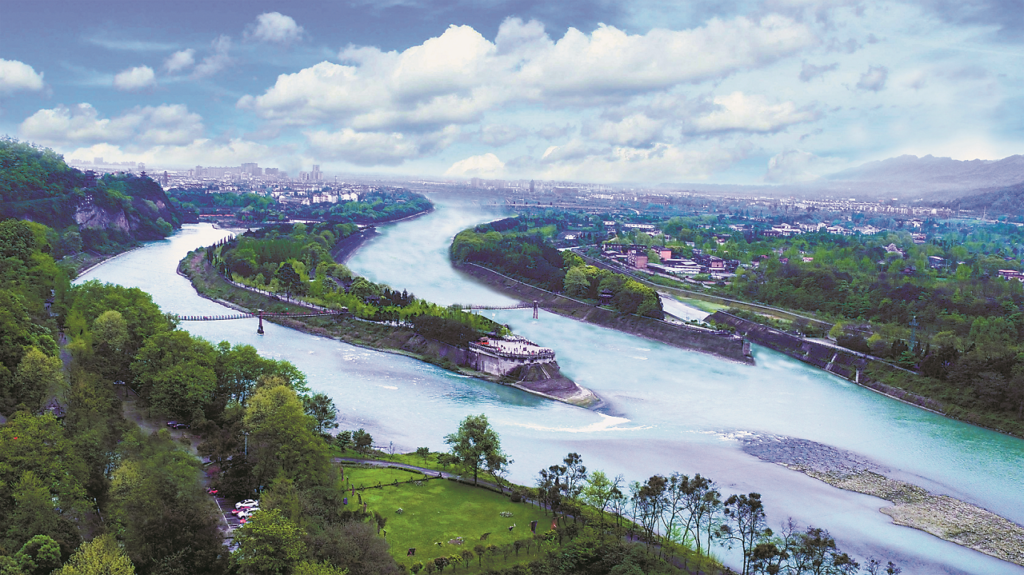
Dujiangyan – One of the greatest engineering achievements of ancient China
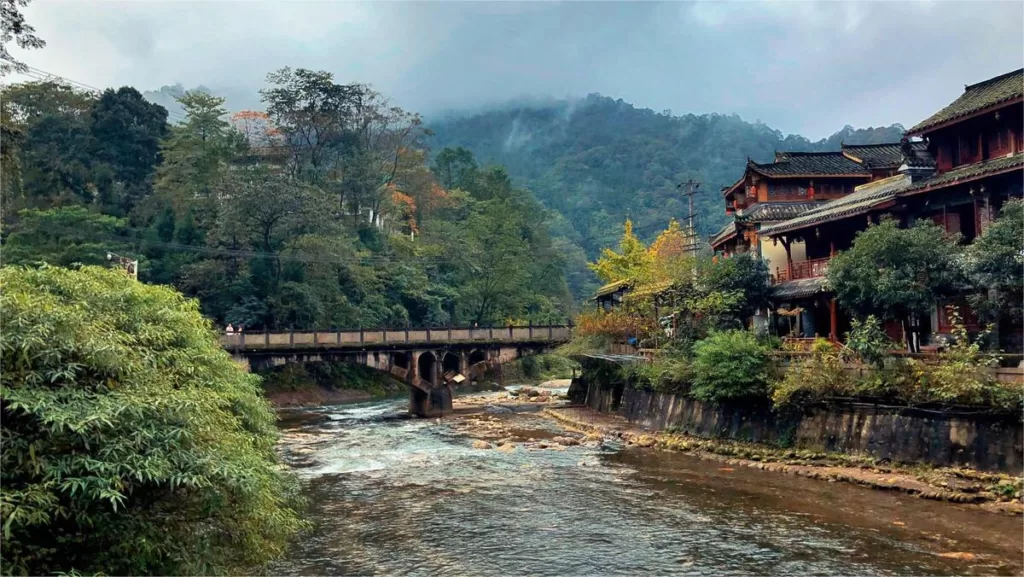
Qingcheng Back Mountain – A majestic and serene destination

Mount Qingcheng – One of the most renowned Taoist mountains
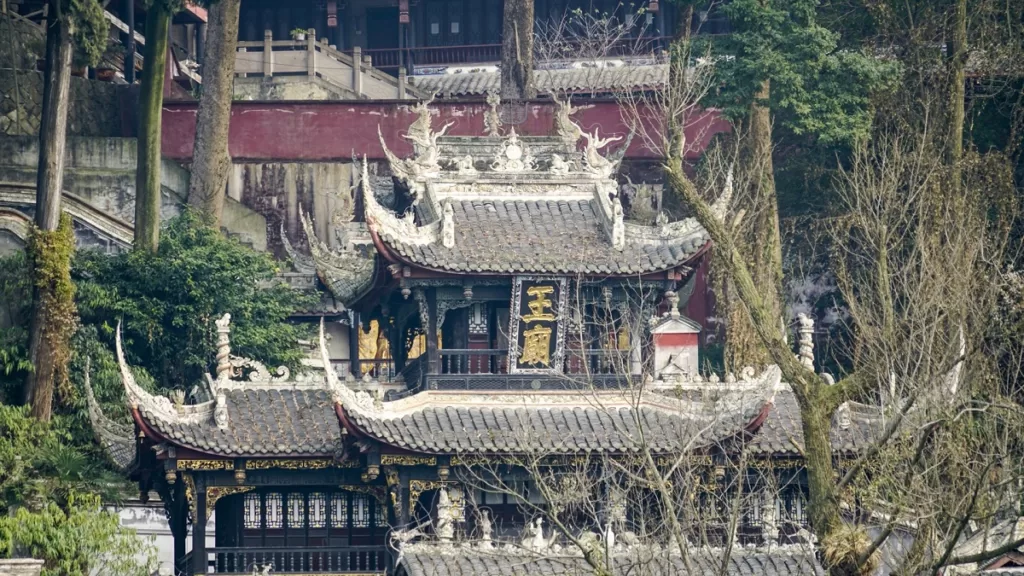
Erwang Temple – In hornor of the architecturer of Dujiangyan
Other Places to See Panda

Bifengxia Panda Base

Chengdu Research Base of Giant Panda Breeding
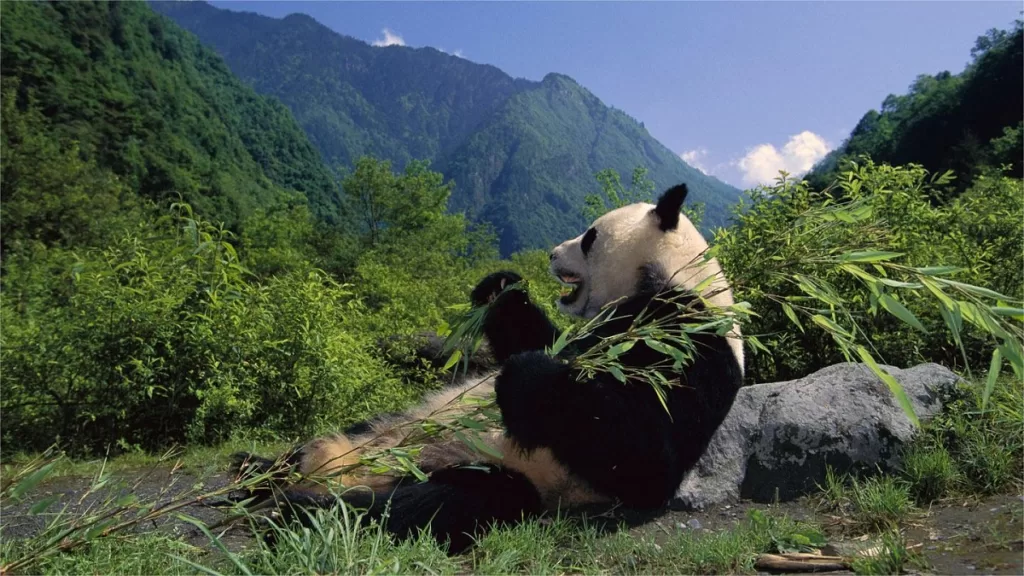
Wolong National Nature Reserve
Chengdu attractions, Sichuan local life